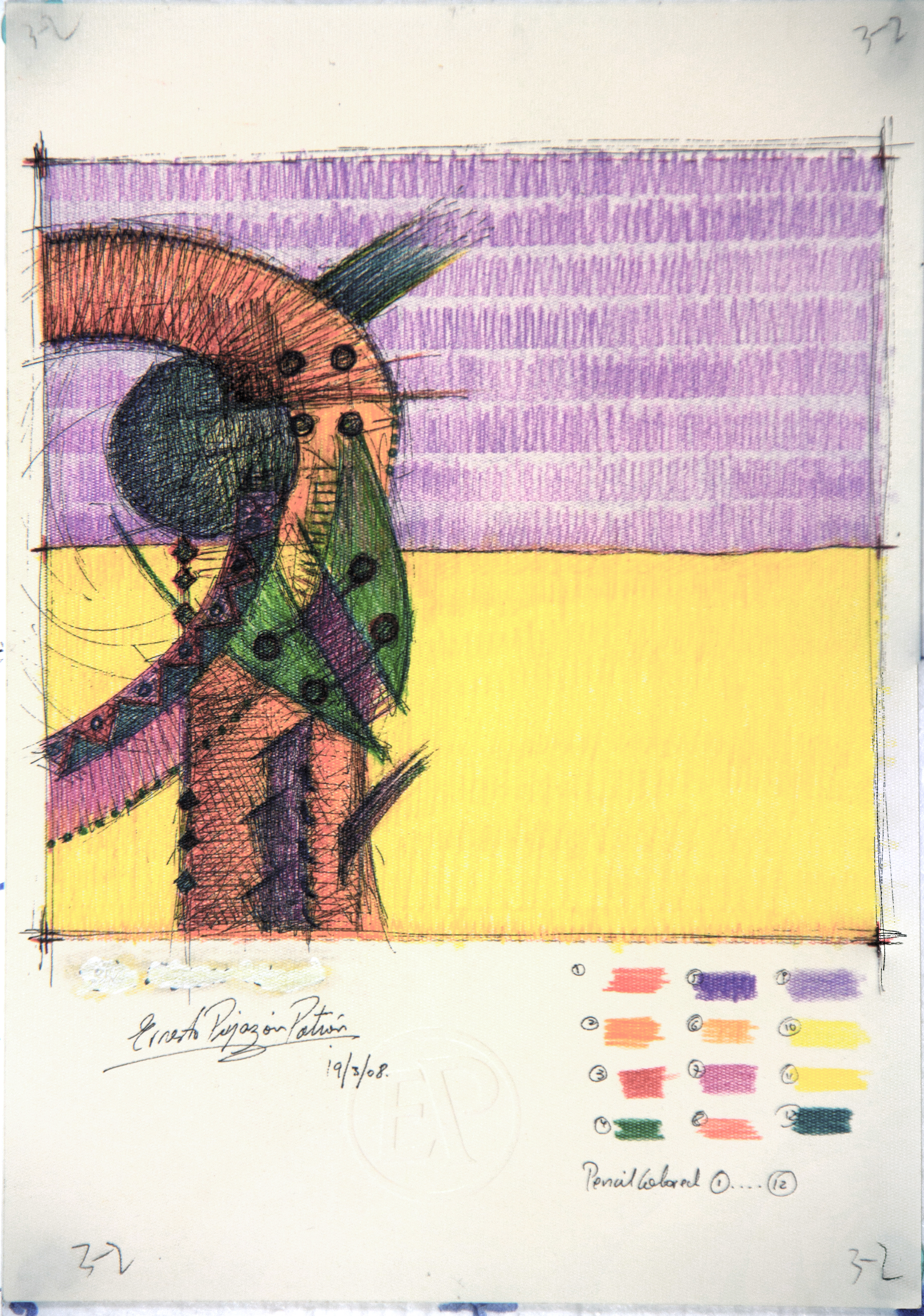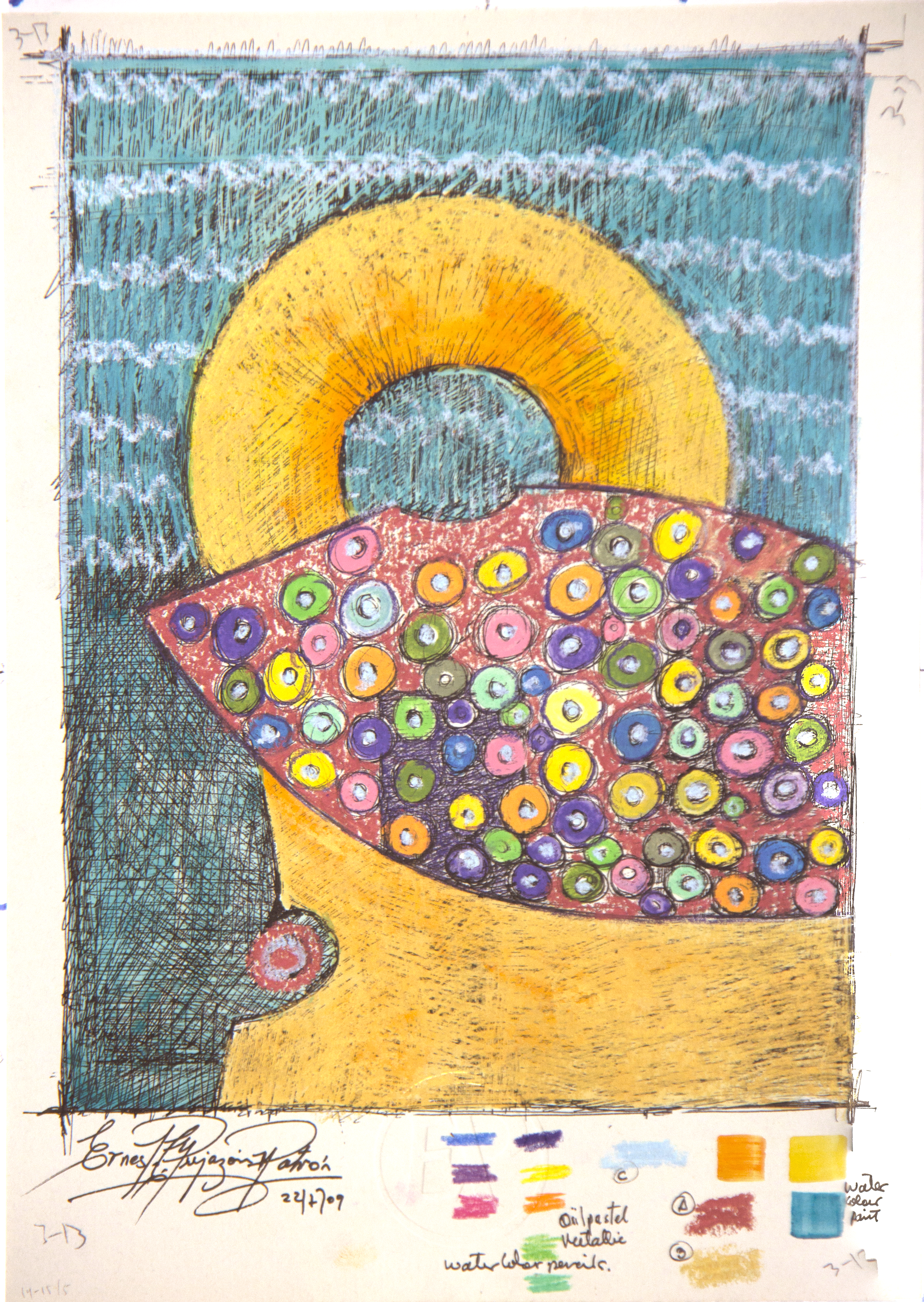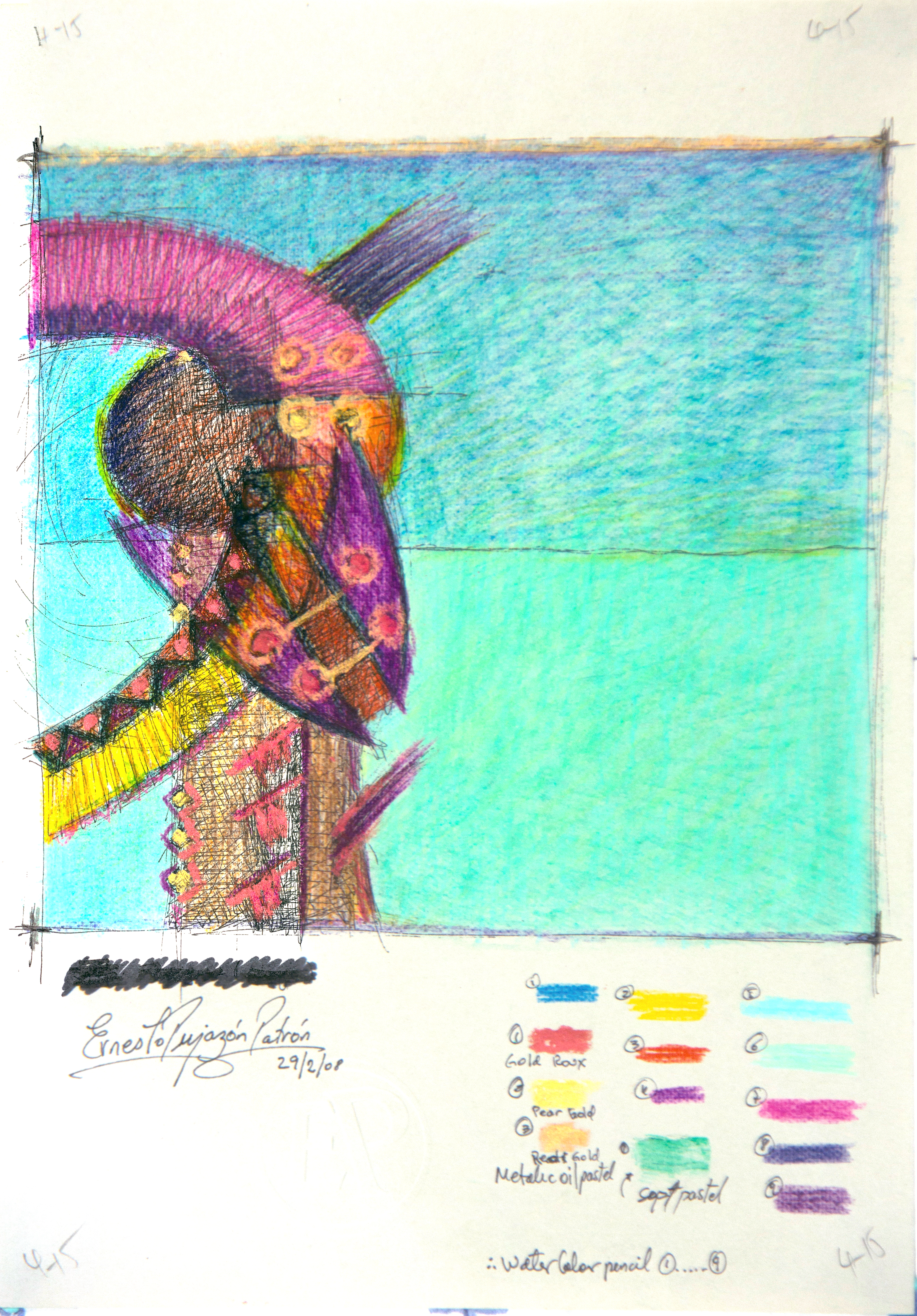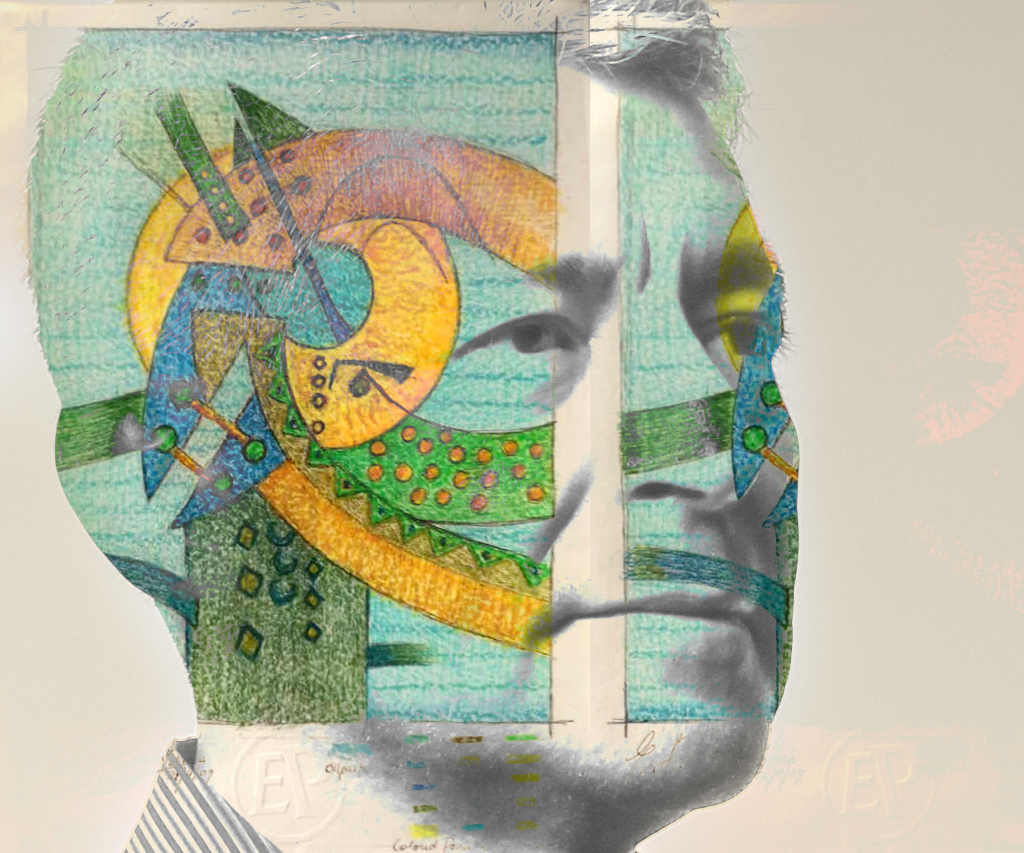
This series of sketches was inspired by a set of paintings executed by contemporary abstractionist Peruvian Artist Fernando de Szyszlo (1925 – 2017) who developed what is considered a personal abstract indigenous style — a fusion of pre-Columbian and indigenous imagery with modern abstraction and surrealism. These sketches and ideas have evolved from some of Szyszlo’s themes. For example, Inkarri 1968 a painting series in which he used abstract shapes of stark red and black stones was inspired by the myth in which the last Inca, after being physically torn apart at the hands of the Spanish colonists, recomposed his body and defeated the foreign invaders and restored the ancient empire. Other examples include Waman Wasi, 1975 and Anabase, 1982.
Mario Vargas Llosa, a Peruvian writer, and winner of the Nobel Prize in Literature in 2010 once said about Szyszlo’s work: “The primitive and the civilized, the rational and the magical, the refined and the barbaric come into contact and create options.” (Alfred Wild Catalog, Szyszlo, 1991, Bogota, Colombia).
As a Peruvian artist, I have secretly admired Szyszlo’s colour application on the canvas surface. Gomez Sicre (1916 – 1991), a Cuban lawyer and art critic, once described Szyszlo’s own process as an archaeological excavation of sorts. We see the artist make a quick drawing onto a prepared canvas and then apply vivid coats of magenta and purples, followed by a topcoat of black oil paint which he proceeds to partially remove with a rag dipped in solvent that results in a completed work that features his well-known textures and chiaroscuro surface. I took Szyszlo’s description of these works as a starting reference for this body of work.
This materialization of ideas, dreams, emotions, and feelings are my artistic expression. They are not magical or divine mysteries; they evolved from my personal experiences and circumstances where decisions made related to my own cultural antecedents and homeland, Peru. I grew up in a small, relaxed town, Ica located 350 km south of the capital, Lima. Ica is a wine and cotton producing town in the Valley of Ica. Two of the most influential pre-Inca cultures developed there. The Paracas (“Para-ako” from the Quechua meaning “sand falls like a rain”) civilization developed from 800 BC to 100 BC. This ancient, Pre-Inca culture developed an extensive knowledge of irrigation and water management and made significant contributions to textile arts; the Nazca civilization thrived from 100 BC to 800 AD and produced an array of crafts and technologies such as exquisite ceramics, pottery, textiles, and geoglyphs—specifically the Nazca Lines. They also built an impressive system of underground aqueducts known as “puquios” that still function today.
In this sketch series, I have developed certain elements in each composition; that are related to these two Pre-Inca cultures, Paracas and Nazca. These significant elements could act as impulsive ideas or marks indicating compositional poles of tension which impact and affect the alignment and balance set at the beginning of this activity.
I work on a vertical rectangle commonly known as portrait format. Within this area, I am prompted to use regular and irregular shapes such as circles, semi-circles, rectangles, triangles, and all sorts of lines, straight or curved, as well as weaving straps as part of the symbolism that I have developed based on my own visual language. For example, in the syntax of my sketches, I associate the circle shape to the sun or the moon depending upon which sketch I am developing; or I may sketch some weaving straps that may represent running water, rivers or ocean waves; as for triangular and trapezoid shapes depicted along with other elements within the drawing, they describe Apu a Quechua word that describes the spirit of the mountains or hills. These Apus were worshiped by the Peruvian Pre-Colombian civilization. The portrait format is divided with a horizontal line breaking it into figure or ground and the sky above.
Every existing sketch, idea, or mark evolves or mutates; these forms that appear in my creative process help to travel from preliminary sketch to a new sketch in a non-stop motion of formations.
This sketch series was made with the sole purpose of applying different compositional color sets— colors that bring innumerable possible combinations such as shades of blue hues with a touch of orange making each combination a unique and distinct drawing. I have never applied color where a spontaneous or refined drawing did not previously exist.
As an artist, every day sketching is part of my “primordial creative process”; this cognitive activity of marks and scribbles on a surface enables me to communicate through a formal language of symbols that represent the visual world apparent around us. This symbolic communication and “primordial creative process” mediates between my metaphysical and the physical perception. What is understood and what is thought — this distinction between the objective and subjective sometimes can be confused and difficult to navigate. Nevertheless, these are intrinsic properties of the creative process of mark making. Commonly, there is the assumption that drawing must transcribe observation. But drawing can also empower me to experience the process of creating something special and imaginary as well as visualizing my inner thoughts and fears that expose myself to be analyzed and criticized by the viewer.
This exhibition was held at CoDA Gallery, at Taylor’s University from the 23 – 26 of July 2019.





